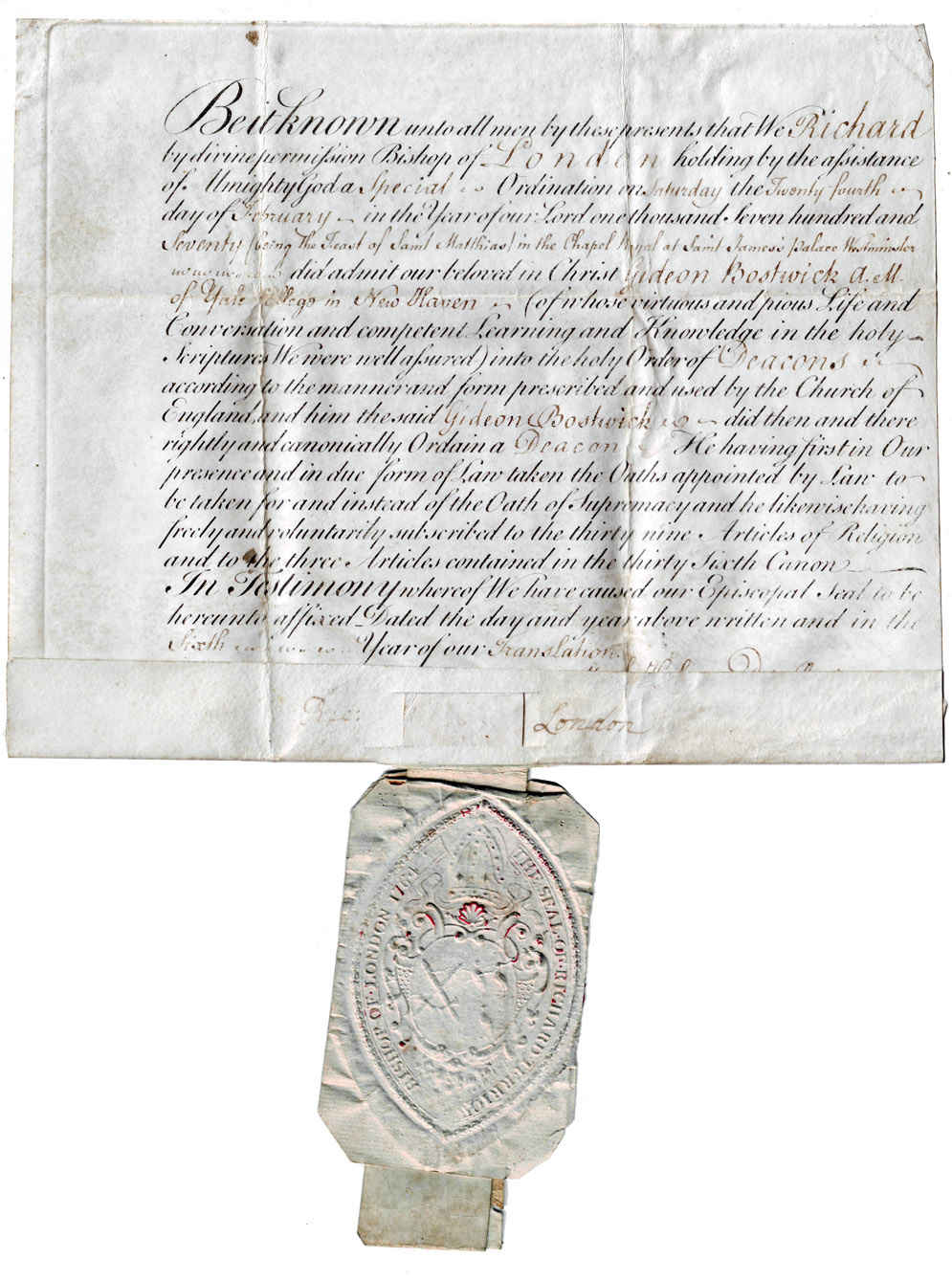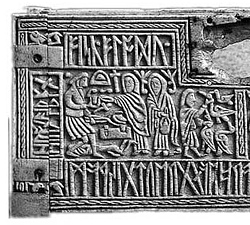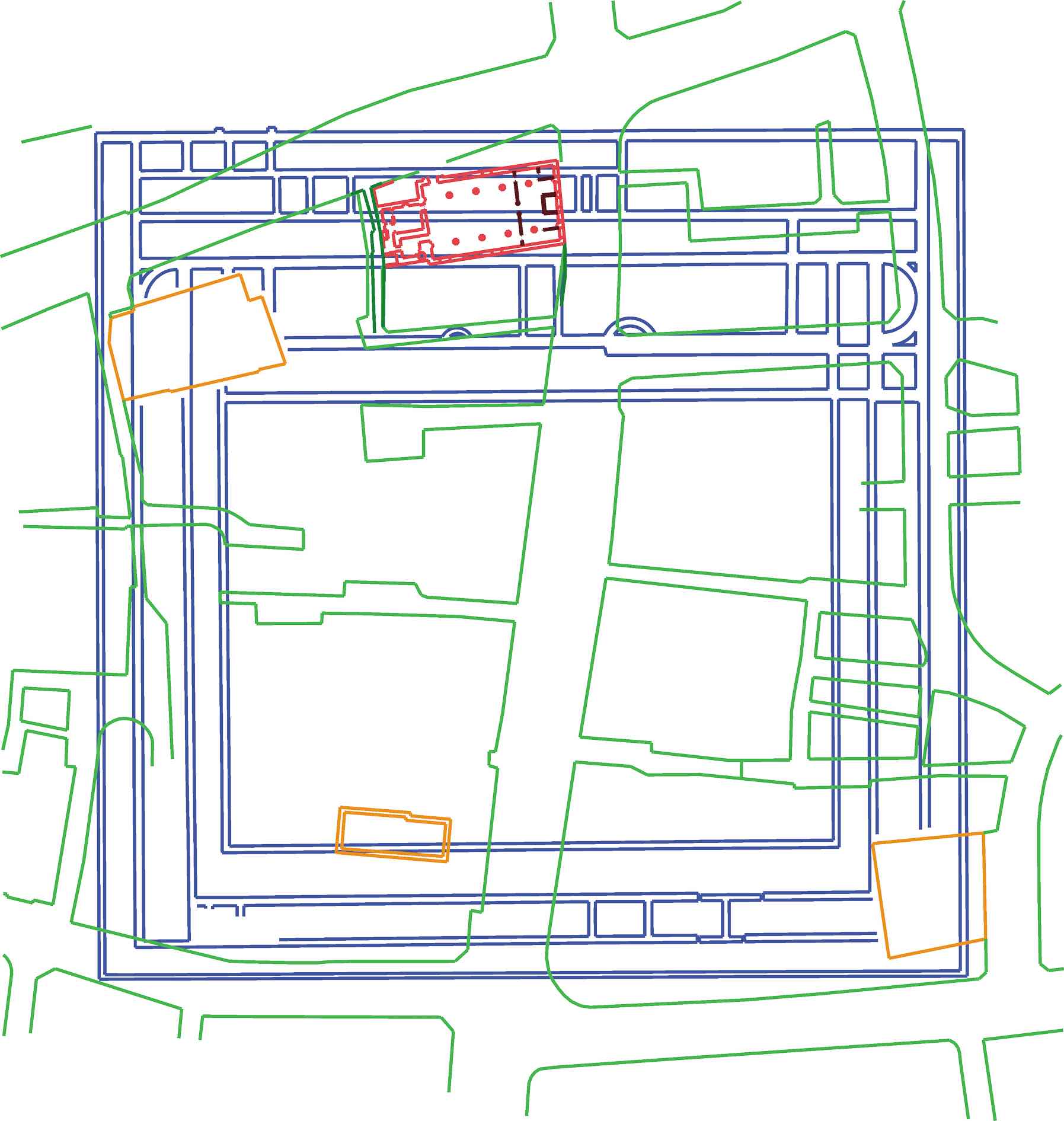|
Mellitus
Mellitus (; died 24 April 624) was the first bishop of London in the Saxon period, the third archbishop of Canterbury, and a member of the Gregorian mission sent to England to convert the Anglo-Saxons from their native paganism to Christianity. He arrived in 601 AD with a group of clergy sent to augment the mission, and was consecrated as Bishop of London in 604. Mellitus was the recipient of a famous letter from Pope Gregory I known as the '' Epistola ad Mellitum'', preserved in a later work by the medieval chronicler Bede, which suggested the conversion of the Anglo-Saxons be undertaken gradually, integrating pagan rituals and customs. In 610, Mellitus returned to Italy to attend a council of bishops, and returned to England bearing papal letters to some of the missionaries. Mellitus was exiled from London by the pagan successors to his patron, King Sæberht of Essex, following the latter's death around 616. King Æthelberht of Kent, Mellitus's other patron, died at abo ... [...More Info...] [...Related Items...] OR: [Wikipedia] [Google] [Baidu] |
Justus
Justus (died on 10 November between 627 and 631) was the fourth archbishop of Canterbury. Pope Gregory the Great sent Justus from Italy to England on a mission to Christianise the Anglo-Saxons from their native paganism; he probably arrived with the second group of missionaries despatched in 601. Justus became the first bishop of Rochester in 604 and signed a letter to the Irish bishops urging the native Celtic church to adopt the Roman method of calculating the date of Easter. He attended a church council in Paris in 614. Following the death of King Æthelberht of Kent in 616, Justus was forced to flee to Gaul but was reinstated in his diocese the following year. In 624, he was elevated to Archbishop of Canterbury, overseeing the despatch of missionaries to Northumbria. After his death, he was revered as a saint and had a shrine in St Augustine's Abbey, Canterbury, to which his remains were translated in the 1090s. Arrival in Britain Justus was a member of the ... [...More Info...] [...Related Items...] OR: [Wikipedia] [Google] [Baidu] |
Gregorian Mission
The Gregorian missionJones "Gregorian Mission" ''Speculum'' p. 335 or Augustinian missionMcGowan "Introduction to the Corpus" ''Companion to Anglo-Saxon Literature'' p. 17 was a Christian mission sent by Pope Pope Gregory I, Gregory the Great in 596 to convert Britain's Anglo-Saxons.Mayr-Harting ''Coming of Christianity'' p. 50 The mission was headed by Augustine of Canterbury. By the time of the death of the last missionary in 653, the mission had Christianisation of Anglo-Saxon England, established Christianity among the southern Anglo-Saxons. Along with the Irish and Franks, Frankish missions it converted Anglo-Saxons in other parts of Britain as well and influenced the Hiberno-Scottish missions to continental Europe. When the Roman Empire recalled its Roman legion, legions from the province of Roman Britain, Britannia in 410, parts of the island had already been Anglo-Saxon invasion of Britain, settled by Anglo-Saxon paganism, pagan Germanic peoples, Germanic tribes who, ... [...More Info...] [...Related Items...] OR: [Wikipedia] [Google] [Baidu] |
Laurence Of Canterbury
Laurence (died 2 February 619) was the second Archbishop of Canterbury, serving from about 604 to 619. He was a member of the Gregorian mission sent from Italy to England to Christianise the Anglo-Saxons from their native Anglo-Saxon paganism, although the date of his arrival is disputed. He was consecrated archbishop by his predecessor, Augustine of Canterbury, during Augustine's lifetime, to ensure continuity in the office. While archbishop, he attempted unsuccessfully to resolve differences with the native British bishops by corresponding with them about points of dispute. Laurence faced a crisis following the death of King Æthelberht of Kent, when the king's successor abandoned Christianity; he eventually reconverted. Laurence was revered as a saint after his death in 619. Early life Laurence was part of the Gregorian mission originally dispatched from Rome in 595 to convert the Anglo-Saxons from their native paganism to Christianity; he landed at Thanet, Kent, with Aug ... [...More Info...] [...Related Items...] OR: [Wikipedia] [Google] [Baidu] |
Christianisation Of Anglo-Saxon England
The Christianisation of Anglo-Saxon England was the process starting in the late 6th century by which population of England formerly adhering to the Anglo-Saxon paganism, Anglo-Saxon, and later Old Nordic religion, Nordic, forms of Germanic paganism converted to Christianity and adopted Christian worldviews. The process of Christianisation and timing of the adoption of Christianity varied by region and was not necessarily a one-way process, with the traditional religion regaining dominance in most kingdoms at least once after their first Christian king. Kings likely often converted for political reasons such as the imposition by a more powerful king, to gain legitimacy, and to access book-writing traditions; however, there were also significant drawbacks to the conversion that may explain the reluctance of many kings to be baptised. The first major step was the Gregorian mission that landed in the Kingdom of Kent in 597, and within the Heptarchy, Æthelberht of Kent became the ... [...More Info...] [...Related Items...] OR: [Wikipedia] [Google] [Baidu] |
Sæberht Of Essex
Sæberht, Saberht or Sæbert (d. 616) was an Anglo-Saxon King of Essex (r. 604 – 616), in succession of his father King Sledd. He is known as the first East Saxon king to have been converted to Christianity. The principal source for his reign is the early 8th-century ''Historia Ecclesiastica gentis Anglorum'' by Bede (d. 735), who claims to have derived his information about the missionary work of Mellitus among the East Saxons from Abbot Albinus of Canterbury through the London priest Nothhelm, later Archbishop of Canterbury (d. 739). Other sources include the ''Anglo-Saxon Chronicle'', an East Saxon genealogy possibly of the late 9th century (British Library Add MS 23211), and a handful of genealogies and regnal lists written down by Anglo-Norman historians. Family The genealogies and regnal lists are unanimous in describing Sæberht as the son of Sledd, who may have been regarded as the founder of the East Saxon dynasty. According to Bede, Sæberht's mother was ... [...More Info...] [...Related Items...] OR: [Wikipedia] [Google] [Baidu] |
Augustine Of Canterbury
Augustine of Canterbury (early 6th century in England, 6th century – most likely 26 May 604) was a Christian monk who became the first archbishop of Canterbury in the year 597. He is considered the "Apostle to the English". Augustine was the Prior (ecclesiastical), prior of a monastery in Rome when Pope Pope Gregory I, Gregory the Great chose him in 595 to lead a mission, usually known as the Gregorian mission, to Britain to Christianization, Christianize King Æthelberht of Kent, Æthelberht and his Kingdom of Kent from Anglo-Saxon paganism. Kent was likely chosen because Æthelberht Bretwalda, commanded major influence over Heptarchy, neighbouring Anglo-Saxon kingdoms in addition to his marriage to Bertha of Kent, Bertha, a Franks, Frankish princess, who was expected to exert some influence over her husband. Before reaching Kent, the missionaries had considered turning back, but Gregory urged them on, and in 597, Augustine landed on the Isle of Thanet and proceeded t ... [...More Info...] [...Related Items...] OR: [Wikipedia] [Google] [Baidu] |
St Augustine's Abbey
St Augustine's Abbey (founded as the Monastery of Ss Peter and Paul and changed after its founder St Augustine of Canterbury's death) was a Benedictine monastery in Canterbury, Kent, England. The abbey was founded in 598 and functioned as a monastery until its dissolution in 1538 during the English Reformation. After the abbey's dissolution, it underwent dismantlement until 1848. Since 1848, part of the site has been used for educational purposes (used as boarding houses and a library by The King's School, Canterbury) and the abbey ruins have been preserved for their historical value. From founding until dissolution In 597, Augustine arrived in England, having been sent by the missionary-minded Pope Gregory I to convert the Anglo-Saxons.England's Christian Heritage: Kent Guide at englandschristianheritage.org.uk, acce ... [...More Info...] [...Related Items...] OR: [Wikipedia] [Google] [Baidu] |
Bishop Of London
The bishop of London is the Ordinary (church officer), ordinary of the Church of England's Diocese of London in the Province of Canterbury. By custom the Bishop is also Dean of the Chapel Royal since 1723. The diocese covers of 17 boroughs of Greater London north of the Thames, River Thames (historically the City of London and the County of Middlesex) and a small part of the County of Surrey (the district of Borough of Spelthorne, Spelthorne, historically part of Middlesex). The Episcopal see, see is in the City of London, where the seat is St Paul's Cathedral, which was founded as a cathedral in 604 and was rebuilt from 1675 following the Great Fire of London (1666). Third in seniority in the Church of England after the archbishops of Archbishop of Canterbury, Canterbury and Archbishop of York, York, the bishop is one of five senior bishops who sit as of right as one of the 26 Lords Spiritual in the House of Lords (for the remaining diocesan bishops of lesser rank, seats are ... [...More Info...] [...Related Items...] OR: [Wikipedia] [Google] [Baidu] |
Anglo-Saxon Paganism
Anglo-Saxon paganism, sometimes termed Anglo-Saxon heathenism, Anglo-Saxon pre-Christian religion, Anglo-Saxon traditional religion, or Anglo-Saxon polytheism refers to the religious beliefs and practices followed by the Anglo-Saxons between the 5th and 8th centuries AD, during the initial period of Anglo-Saxon England, Early Medieval England. A variant of Germanic paganism found across much of north-western Europe, it encompassed a heterogeneous variety of beliefs and cultic practices, with much regional variation. Developing from the earlier Iron Age religion of continental northern Europe, it was introduced to Britain following the Anglo-Saxon invasion of Britain, Anglo-Saxon migration in the mid 5th century, and remained the dominant belief system in England until the Christianisation of Anglo-Saxon England, Christianisation of its kingdoms between the 7th and 8th centuries, with some aspects gradually blending into English folklore, folklore. The pejorative terms ''paganis ... [...More Info...] [...Related Items...] OR: [Wikipedia] [Google] [Baidu] |
Christianization
Christianization (or Christianisation) is a term for the specific type of change that occurs when someone or something has been or is being converted to Christianity. Christianization has, for the most part, spread through missions by individual conversions, but has also, in some instances, been the result of violence by individuals and groups such as governments and militaries. Christianization is also the term used to designate the conversion of previously non-Christian practices, spaces and places to Christian uses and names. In a third manner, the term has been used to describe the changes that naturally emerge in a nation when sufficient numbers of individuals convert, or when secular leaders require those changes. Christianization of a nation is an ongoing process. It began in the Roman Empire when the early individual followers of Jesus became itinerant preachers in response to the command recorded in Matthew 28:19 (sometimes called the Great Commission) to go to all the ... [...More Info...] [...Related Items...] OR: [Wikipedia] [Google] [Baidu] |
Bishop Of London
The bishop of London is the Ordinary (church officer), ordinary of the Church of England's Diocese of London in the Province of Canterbury. By custom the Bishop is also Dean of the Chapel Royal since 1723. The diocese covers of 17 boroughs of Greater London north of the Thames, River Thames (historically the City of London and the County of Middlesex) and a small part of the County of Surrey (the district of Borough of Spelthorne, Spelthorne, historically part of Middlesex). The Episcopal see, see is in the City of London, where the seat is St Paul's Cathedral, which was founded as a cathedral in 604 and was rebuilt from 1675 following the Great Fire of London (1666). Third in seniority in the Church of England after the archbishops of Archbishop of Canterbury, Canterbury and Archbishop of York, York, the bishop is one of five senior bishops who sit as of right as one of the 26 Lords Spiritual in the House of Lords (for the remaining diocesan bishops of lesser rank, seats are ... [...More Info...] [...Related Items...] OR: [Wikipedia] [Google] [Baidu] |
Æthelberht Of Kent
Æthelberht (; also Æthelbert, Aethelberht, Aethelbert or Ethelbert; ; 550 – 24 February 616) was Kings of Kent, King of Kingdom of Kent, Kent from about 589 until his death. The eighth-century monk Bede, in his ''Ecclesiastical History of the English People'', lists him as the third king to hold ''imperium'' over other Anglo-Saxon kingdoms. In the late ninth century ''Anglo-Saxon Chronicle'', he is referred to as a ''bretwalda'', or "Britain-ruler". He was the first Anglo-Saxon king to Christianisation of Anglo-Saxon England, convert to Christianity. Æthelberht was the son of Eormenric of Kent, Eormenric, succeeding him as king, according to the ''Chronicle''. He married Bertha of Kent, Bertha, the Christian daughter of Charibert I, king of the Franks, thus building an alliance with the Francia, most powerful state in contemporary Western Europe; the marriage probably took place before he came to the throne. Bertha's influence may have led to Pope Gregory I, Pope Gr ... [...More Info...] [...Related Items...] OR: [Wikipedia] [Google] [Baidu] |









